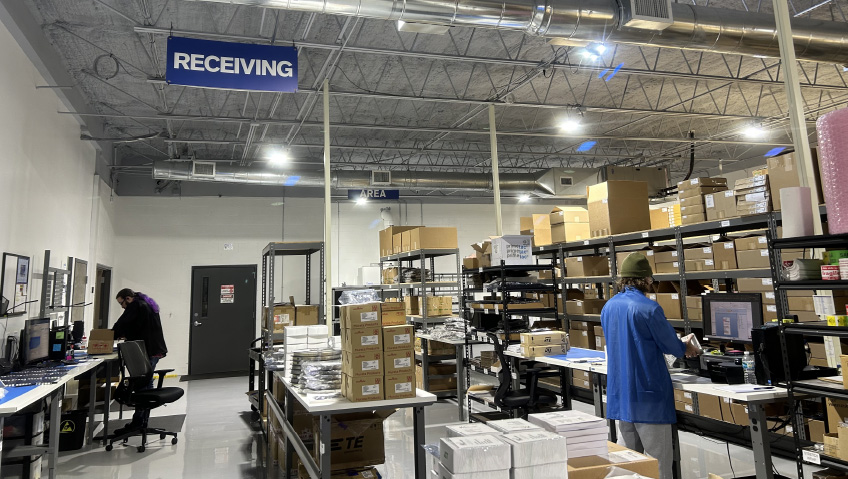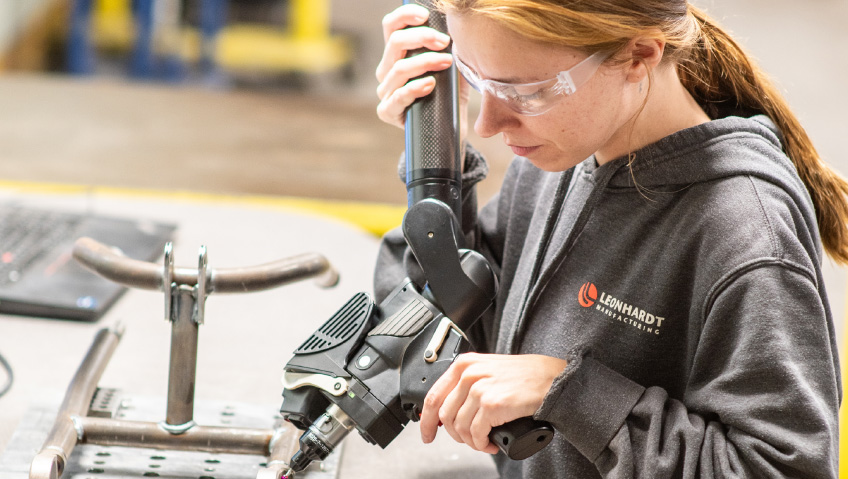There’s a fine line between inventor and innovator, between not only finding a niche that needs filling, but creating the very solution that changes lives for the better. Inventors have the unique ability to think creatively and produce original ideas that have made vast differences for humanity over the years, and even though throughout history some of the most notable inventions to date have been made by women, men have been credited and recognized for their creations much more often.
Part of this is due to the fact that not only is there a gender gap in the STEM profession, but also in patenting activity. According to the Intellectual Property (IP) Statistics Data Center of the World Intellectual Property Organization (WIPO), 16 percent of inventors mentioned on Patent Cooperation Treaty (PCT) applications submitted in 2020 were women. More than two-thirds of PCT applications didn’t contain any female inventors, despite the fact that the percentage of 2020 PCT applications that included at least one female inventor was higher at 32 percent.
Patents are associated with pay raises and financial incentives in several scientific domains, but even in the innovation sector, women still make less money than men. After adjusting for occupation, immigration status, and other variables, inventors with patents continually make more money on average than non-inventors, so those who engage in patenting activities are more likely to be financially successful. In short, encouraging more women inventors to participate in the patenting process can not only aid in reducing the salary gap between men and women, but, just as importantly, encourage the next generation of women to enter the STEM workforce where they can continue to make amazing contributions to inventions that have altered the way the world functions, address issues, increase productivity, and so much more.
The names Thomas Edison, Alexander Graham Bell, the Wright Brothers, and Benjamin Franklin, along with their inventions, are well-known to children as early as grade school, and if you Google “famous inventors,” page after page of names appear, the vast majority of them male. To find women inventors online, you have to search specifically for “women inventors,” even though many of them have made invaluable contributions to our society.
Hedy Lamarr (1914-2000) was a celebrated and famous Hollywood film star, but few know that her ideas also gave rise to GPS, Bluetooth, and Wi-Fi technology. This Austrian-American actress was also a skilled mathematician and engineer who contributed to the war effort by advancing torpedo technology with the concept of “frequency hopping”—which Lamarr developed with musician and composer George Antheil—to encrypt torpedo control messages and prevent enemies from jamming and diverting them from their intended route.
If you hate washing piles of dishes by hand—and who doesn’t?—you have Josephine Cochrane (1839-1913) to thank. Cochrane came up with the concept of a mechanical dishwasher that would keep dishes in a rack while the pressure of a water sprayer washed them. She started promoting her dishwasher to hotels after receiving her patent in 1886 during an era where women were thoroughly discouraged from stepping outside the bounds of what was considered proper behaviour. She told a reporter, “You cannot fathom what it was like in those days for a lady to walk a hotel lobby alone. The lobby appeared a mile wide because I had never been somewhere without my spouse or father. Every step I took, I expected to pass out, but I didn’t, and as a reward, I received an $800 order.” Cochrane’s legacy endures today through KitchenAid, which acquired her business in 1916, and Cochrane is still credited as one of the company’s founders.
Born in 1946, Dr. Shirley Jackson, a theoretical physicist and the 18th president of Rensselaer Polytechnic Institute (RPI) made history in 1973 when she became the first Black woman to receive a PhD from MIT. Later, while working for Bell Laboratories, she completed studies that resulted in the development of solar cells, fiber optic cables, portable fax machines, touch-tone phones, caller ID, and call waiting, among other invaluable innovations that society relies on heavily today.
Of course, you can’t talk about scientific pioneers and inventors without mentioning Marie Curie (1867-1934), one of history’s greatest scientists. She was the first to examine the Theory of Radioactivity, discovered that humans could divide an atom, discovered polonium and radium, and was the first woman to occupy the position of Professor of General Physics in the Faculty of Sciences following the death of her husband, Pierre Curie. Curie was not only the first woman to be awarded the Nobel Prize, she was the first to be awarded the esteemed prize twice, and the only person who has won it in two difference fields of science.
The first-ever Black woman and the first-ever woman of colour to work as an ophthalmology resident at New York University’s Jules Stein Eye Institute, Patricia Bath (1942-2019) was also the first female Black doctor to obtain a medical patent for her Laserphaco Probe that quickly and painlessly dissolves ocular cataracts. Her Laserphaco Probe is now used throughout the world to prevent cataract-related blindness. Bath is also responsible for the creation of community ophthalmology, a brand-new field of study designed to guarantee everyone has access to vision and eye care.
If you’ve ever been shot at and survived, you may have Stephanie Kwolek (1923-2014) to thank. Kwolek found the fiber now known as Kevlar while working to develop a substitute for steel used in radial car tires. Even though her attempt to transform a solid polymer into a liquid failed, she noticed the material’s fibers were five times stronger than steel. Since its discovery, it has been applied to a variety of products, most notably police protection jackets and bicycle tires.
Family game night will never be the same when you learn the origins of the game Monopoly, created by Elizabeth “Lizzie” Magie (1866-1948) as “The Landlord’s Game,” trademarked in 1904 by Magie as a critique of the evils of unfettered capitalism. Charles Darrow ironically took her game and sold it to the Parker Brothers in 1935. When the business located Magie, they only made a $500 offer to her, and the game’s current owner, Hasbro, came under fire in 2019 when it released “Ms. Monopoly,” an allegedly feminist version of the game that still didn’t acknowledge the woman who invented the original.
With climate change and environmental issues at the forefront, it’s good to know a woman like Katsuko Saruhashi (1920-2007) took it to heart with an invention that made it possible for scientists to estimate how much CO2 the ocean releases and absorbs years before those numbers become crucial to investigating and comprehending the climate catastrophe. Saruhashi entered the field of science at the age of 21 and created the first technique for measuring CO2 using temperature, pH, and chlorinity, which is now the industry standard. Even after being questioned by the U.S. Atomic Energy Commission, her work held up and played a significant role in ending above-ground nuclear testing at the height of the Cold War.
Not only is Dr. Arlyne Simon (1986) an author of children’s books and a biomedical engineer, but she’s also an inventor who assisted in the development of bioassays for identifying graft-versus-host disease (GVHD) in cancer patients while working as a co-founder of the life science business PHASIQ in 2012, where her work was the basis for three of her patents. While a systems engineer with Intel, she also contributed to the creation of one of the fastest supercomputers in the world. The United States Patent and Trademark Office honoured Simon as a trailblazing female innovator in their Women’s History Month Exhibit in 2017, and she’s included in the 2021 AAAS #IfThenSheCan exhibit, which showcases the most influential women in STEM.
While the world knows Margaret Atwood (1939) as a prolific and highly regarded writer, few realize she’s also an inventor. The LongPen, a remote robotic writing device, allows users to remotely write in ink from anywhere in the world via tablet PC and the Internet, an idea that arose while Atwood was on a book tour. She established Unotchit Inc., to create, manufacture, and market the technology, and by 2011 the company had moved its market focus to commercial and legal transactions and was selling a range of products based on the LongPen technology for various remote writing applications. Atwood is still a co-founder, director, and owner of several patents for the LongPen and associated technology as of May 2021.
It’s inspiring to see inventors who are just starting out but still making a huge impact, like Lydia Denton, who at the age of 14, has created a “Halcyon Bracelet” to assist with body-focused repetitive habits brought on by acute anxiety and life-threatening allergies. She’s also created the “Beat the Heat Car Seat” that detects when a child has been left in a vehicle and calls emergency authorities if the temperature rises dangerously high.
No invention is successful in its first attempt, and some happen completely by accident, as demonstrated by chemist Patsy O’Connell Sherman (1930-2008). While working on developing rubber for jet fuel hoses, a lab assistant dropped Sherman’s invention’s contents onto her shoe, and later discovered the shoes were soiled and scratched everywhere except where the spill happened. Scotchgard—which shields fabrics from water, oil, and dirt—was born, and despite being told in high school her best career option was “housewife,” Sherman went on to develop 16 additional innovations, all of which were granted patents.
Finally, Marion Donovan (1917-1998) is testament to the saying “Necessity is the mother of invention.” She not only created the first water-resistant diaper cover to keep cloth diapers from leaking, but she also invented disposable diapers, which she sold to Pampers. Both of Donovan’s innovations were first rejected, but she persisted and eventually received 20 patents for creations over the course of her lifetime. In her own words, women inventors and persistence in the face of adversity go hand in hand: “I went to all the big names that you could think of and they said, ‘we don’t need it—no woman has asked us for that.’ So, I went into manufacturing myself.”
While many women inventors on this very short list were constrained by time, place, and societal expectations, they succeeded in spite of the hardships they endured. If only a fraction of these incredible women and their innovative creations were taught in school systems today, the impact on girls and women could be transformative.






